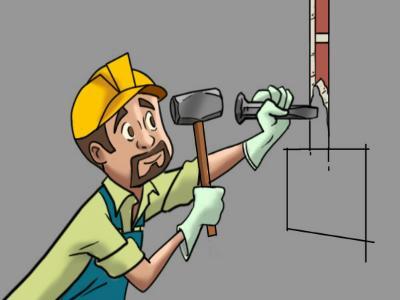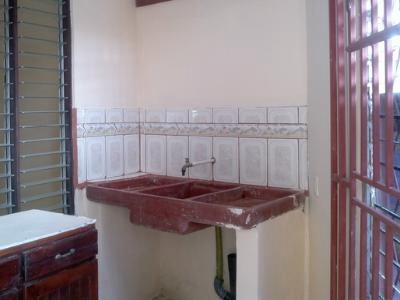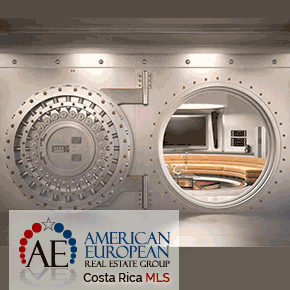Estimated Reading Time: 9 Minutes
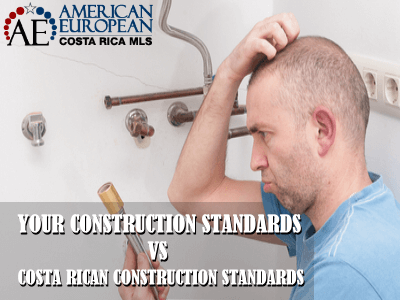
Did you know that the standards in Costa Rican construction are probably different from the ones you are used to?
The successful construction of housing in Costa Rica depends on the efforts of hundreds of tradesmen and thousands of building materials all assembled at the right time in the right places. Likewise, the quality of the labor, as well as the proper installation of the specified building materials, affects the overall quality of construction. There are many factors that determine if an existing home in Costa Rica will be sufficient for your needs.
There are many excellent Costarican engineers, architects, and contractors here who are capable of building up to your standards. IF they are given a sufficient budget. The problem is that the average construction worker who performs the hands-on work is accustomed to building using the traditional local standards. Unless they are constantly supervised, they will do it their way. That is, to the local standards in Costa Rican construction that they are accustomed to.
The architects and engineers who supervise the construction in Costa Rica, normally visit a construction site maybe once a day, for an hour or so. During the course of an 8-hour workday, the on-site construction workers can install many building materials their way. And that may not be up to your standards.
The wrong conduit
A number of years ago I completed a home inspection for a North American who had purchased a brand new home in the Cariari subdivision in Heredia. There, a Costa Rican builder had installed thin-walled conduit tubes. Those are normally used to protect insulated electrical wires, instead of pressurized water tubes. The water tubes leaked inside of the concrete block walls. Additionally, the builder had installed electrical wires. But not inside the conduit tubing and the wires were damaged by the moisture from the water. As a result, all the walls in the home had to be chiseled where the water tubing and electrical wiring had been installed. That was the only way to remove the old and replace it with new. Then all the walls had to be refinished and all the rooms repainted.
It can get expensive to upgrade poor plumbing and electrical installations. There are few building inspectors in Costa Rica working for the local communities who inspect each home’s plumbing and electrical systems to ensure that building codes are enforced.
In order to understand the differences between the standards in Costa Rican construction and the standards that you’re accustomed to. Let’s look at the bath, kitchen, and laundry rooms in the typical Costarican home.
Typical Local Bathroom
Costa Rican bathrooms have quite a few different standards in Costa Rican construction than you are used to:
- Many times when you go into a Tico (Costa Rican) bathroom you will see a wastebasket filled with used toilet paper. The Costa Ricans are accustomed to the local plumbing standards and this is normal here.
- As a result of inadequate sanitary drain tubes, the toilet doesn’t flush everything down the drain and when it does flush, you can smell sewage odors because they do not install tubes that ventilate the sanitary drainage system.
- In many cases, the greywater from sinks and showers drains into the sanitary tubes for the toilet, and because they don’t ventilate the drainage system, the sewage odor escapes from the shower drain which is usually just a hole in the floor without a U trap.
- The showerhead is connected to a cold water metal pipe protruding from the wall and a hot water heater consists of a device called a “suicide shower” which attaches to the metal pipe and has wires entering the wall to an electrical outlet above the showerhead.
- The lavatory sink with one cold water faucet is very small and usually attached to the wall with a couple of screws and no base cabinet.
Typical North American Bathroom
- Full-size toilets with 4″ drain pipes, so all paper drains with one flush.
- Sanitary drain tubes are ventilated to the outside.
- U traps are installed for all the sinks and showers.
- All fixtures and control valves are connected using flexible braided metal, not cheap plastic connectors.
- Ceramic tile shower and galvanized metal floor drain with u trap.
- Hot and cold shower control valves.
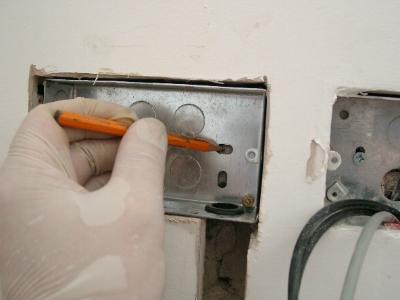
Typical Local Kitchen
In the kitchen, you will find quite a few different standards in Costa Rican construction than you are used to:
- Not enough electrical outlets. You will find only 1 or 2 electrical plugs in a kitchen and they will have 2 outlets with no grounding outlet, so you can’t plug your three-pronged appliances into the plugs. Most electrical plugs are not polarized. So your appliances may not work properly. And if you use adapters to plug into the two-prong electric plugs that are not grounded, your appliances will be damaged during electrical surges.
- The kitchen sink is one small bowl that is not deep enough to submerge a halfway decent size pot and the bottom is not flat, so glasses fall over when you set them in the sink.
- The sink faucet is short and combined with the sink that is not deep, it is difficult to get a pitcher or saucepan under the faucet to fill it up. Only one of the control valves for the faucet allows water to flow because they do not install hot water tubing.
- Smaller cabinets and counters. Costa Rican cabinets have usually a depth that is six inches smaller, so you have less storage and countertop space which minimizes the available area to put the appliances you are accustomed to using.
- Lighting consists of one ceiling fixture with one bulb in the center of the room which makes it difficult to see what you’re doing on the countertops and in the sink.
Typical North American Kitchen
- Full-size base and wall cabinets and countertops with ceramic tile backsplash.
- Double bowl, stainless steel sink with a faucet that allows hot and cold water to flow.
- 1/2 HP Garbage disposal in one bowl and 1-1/2″ sink drains with U traps.
- The electric stove has a 220 volt, 50 amp breaker, and a 110 volts, 20 amp breaker for the grounded electrical plugs that are installed above every 36″ of counter space, and 110 volts, 30 amp breakers for refrigerator and garbage disposal.
- Costa Ricans installs lights every 36″ above the countertops and one centered over the sink.
- Exhaust fan with light centered over the stove.
- Coldwater line and control valve for ice maker.
Typical Local Laundry
The laundry room has quite a few different standards in Costa Rican construction:
- Big concrete basin, known as a “pila” for washing rags and clothes, and a drain without a U trap to prevent sewage odors from entering the room.
- Coldwater tube sticking out of the wall for the pila, with a hose valve-like for a garden hose.
- Coldwater tube sticking out of the wall for a washing machine, but no hot water tube.
Typical North American Laundry
- 40 gallons, 220 volts, hot water tank.
- The washer has a 110 volt, 30 amp electrical plug.
- Hot and cold water tubes for the washing machine. Also, a drain with a recessed U trap into the wall and installed 36″ from the floor.
- Double bowl laundry sinks and a faucet with both hot and cold water.
- The laundry sink drain has a U trap to prevent sewer gasses from entering the room.
- The dryer has a 220-volt plug and a 4” tube through the wall to ventilate the heat to the outside.
Respect
Please don’t misunderstand my intentions. I’m not trying to diminish the local standards in Costa Rican construction. I have lived in Costa Rica since 1992, I love this country and have respect for the local tradesmen. The local construction methods are adequate for most of the people living in Costa Rica. However, some buyers want the type of construction that they grew up with. They are not willing to accept the standards in Costa Rican construction.
About the author: Tom Rosenberger (RIP) was a knowledgeable home and land inspector in Costa Rica with over 30 years of land development and construction experience. He enabled his clients to “See Beyond the Obvious” before committing to land acquisition and construction projects. Tom lived here since 1992, building and remodeling homes and condominiums, and passed away in 2020.



